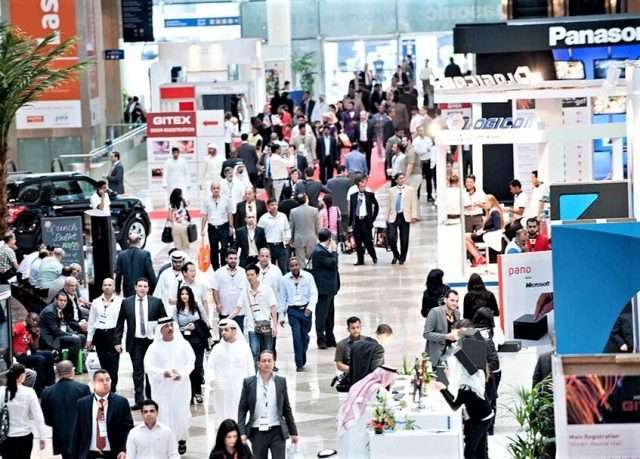
Persian Files ISSN 2975-0598 Volume 6 Issue 1
Author: Silvia Boltuc
The United Arab Emirates expressed their interests in increasing investments and trade with Iran whose geographical position in the Middle East and connections with the Caucasus and Central Asia plays a strategic role in international trade and relations.
On the 8th of February, the Iran-UAE trade conference started in Dubai. Two hundred forty companies participated. Among a high-ranking delegation, Iranian Industry, Mining, and Trade Minister Reza Fatemi-Amin and the Head of the Trade Promotion Organization of Iran (TPOI) Alireza Peyman-Pak attended the event together with over 120 Iranian companies and 40 from the United Arabs Emirates (UAE). Ambassadors of Venezuela and Kazakhstan and the Swiss Business Council representatives were also present.
The head of TPOI stated that the Gulf country had invested 300 million dollars in Iran as part of the foreign direct investments (FDIs). Furthermore, he added that constructive talks had been held with leading Emirati companies to address transport problems and financial transactions. Abu Dhabi has promised to solve Iranian traders’ issues in this field.
Geopolitical scenario
The Islamic Republic’s central pivots are economic diplomacy, developing trade exchanges, and investments with neighbouring countries. Tehran involves neighbouring states in joint investment projects for export and goods transit, taking advantage of its crucial geographical location and special economic zones.
The country itself established several ones, and along the border with Armenia, which is one of the essential corridors used by the Iranians to reach central Asian and Russian markets, Yerevan established the Meghri FEZ. Furthermore, Iran has a free trade agreement with the Eurasian Economic Union (EEU) and its members, and import-export with Armenia is exempt from U.S. sanctions.
President Ebrahim Raisi’s administration has prioritised economic cooperation with regional and neighbouring countries. In this regard, Iran is developing ties with Armenia, Georgia, and Azerbaijan in the South Caucasus as key corridors that led to the European market and enhancing its presence in Astrakhan and Makhachkala Russian port in the Caspian sea as a gateway to Russian markets.
In addition, he strengthened infrastructural and economic cooperation with Afghanistan, which is involved in the Chabahar port project and exchanges gas with Turkmenistan. In the Persian Gulf, target trade partners are the Arab littoral state of Oman and UAE.
Following the Iranian Minister of Industry, Mine and Trade Reza Fatemi Amin visit to Muscat, Iran held a joint economic commission to review the development of collaborations in economic, trade and educational fields. The TPO chief underlined that Oman is keen on having trade ties with members of the Commonwealth of Independent States (CIS), and Iran might play a significant role.
The United Arab Emirates are already one of the leading trade partners of Iran. In this regard, Iran will reactivate its trade centre in the UAE, being the country also a central re-exporting hub in the Persian Gulf. It cannot be underestimated that several tradesmen of both states travelled between the two countries, pointing out the private sector’s key role in achieving Iran’s economic goals and promoting export.
Why does it matter?
In recent months Iran has intensified efforts to rebuild relations with the UAE affected by the years-long war in Yemen and other regional disputes. UAE National Security Advisor Sheikh Tahnoun bin Zayed Al Nahyan visited Iran and invited Iranian President Ebrahim Raisi to visit Abu Dhabi. No Iranian president has visited the UAE since 2007.
Ties between Tehran and Abu Dhabi are expanding due to the new U.S. offshore balancing strategy, which shifted Washington goals in the Indo-Pacific. As many experts underlined, this has created a vacuum where the Persian Gulf countries are redefining their role.
On one side, the rivalry leads them to compete, especially in the gradual transition to a post-oil economy and on the military field when it comes to taking control of the Strait of Hormuz or proxy wars as the one carried out in Yemen. On the other side, mutual security and economic needs bring them closer. Sanctioned Iran and UAE, whose involvement in scenarios such as Syria, Yemen and Lybia affected the domestic economy, are motivated to develop regional diplomatic relations and increase trade.
The Iranian strategy aims to re-establish good diplomatic and commercial relations with those countries that signed the Abraham Accords and are U.S. allies to favour the domestic economy’s interests and rebalance alliances while playing a leading role in the area. More trade and cooperation possibilities will be explored in the future, concurring in stabilising the region and overcoming ideologically and military confrontation between Gulf Sunni countries and Shiite Iran.
Do you like SpecialEurasia reports and analyses? Has our groundbreaking research empowered you or your team? Now is your chance to be a part of our mission! Join us in advancing independent reporting and unlocking the secrets of Eurasia’s complex geopolitical landscape. Whether through a one-time contribution or a monthly/yearly donation, your support will fuel our relentless pursuit of knowledge and understanding. Together, let’s pave the way for a brighter future. DONATE NOW and secure your place in shaping the geopolitical narrative.
